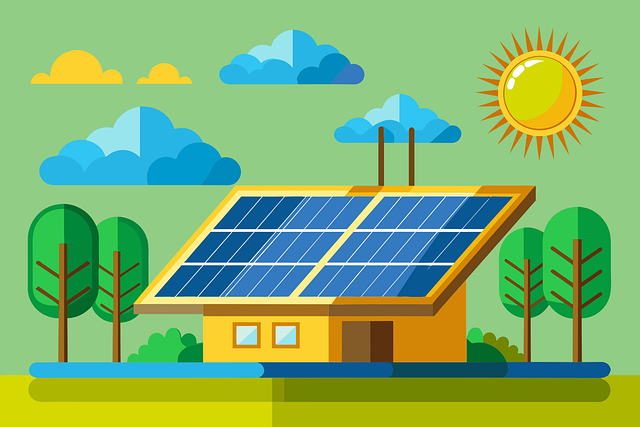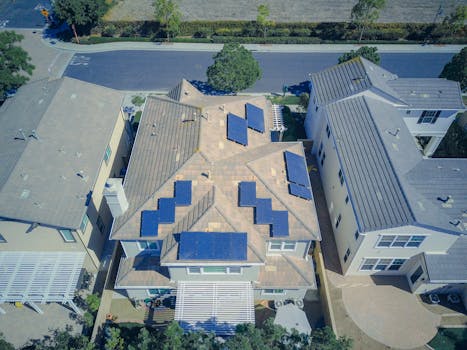“Maximize Your Solar Power: Choose the Right Inverter for Optimal Efficiency!”
Choosing the most efficient solar inverter is crucial for maximizing the performance of your solar energy system. An inverter converts the direct current (DC) generated by solar panels into alternating current (AC) for use in your home or business. To select the right inverter, consider factors such as efficiency ratings, compatibility with your solar panel system, type of inverter (string, micro, or central), features like monitoring capabilities, warranty, and the manufacturer’s reputation. Additionally, assess your energy needs, installation environment, and budget to ensure you make an informed decision that enhances the overall efficiency and longevity of your solar power system.
Types Of Solar Inverters
When considering the installation of a solar energy system, one of the most critical components to evaluate is the solar inverter. This device plays a pivotal role in converting the direct current (DC) generated by solar panels into alternating current (AC), which is the form of electricity used in homes and businesses. Understanding the different types of solar inverters available on the market is essential for making an informed decision that maximizes efficiency and meets your energy needs.
The first type of solar inverter to consider is the string inverter, which is the most commonly used option in residential solar installations. String inverters connect multiple solar panels in a series, or “string,” allowing them to operate collectively. This configuration is relatively simple and cost-effective, making it an attractive choice for many homeowners. However, one drawback of string inverters is their susceptibility to shading issues. If one panel in the string is shaded or underperforming, it can affect the entire string’s output. Therefore, while string inverters are efficient in optimal conditions, they may not be the best choice for installations with varying levels of sunlight exposure.
In contrast, microinverters offer a more advanced solution by attaching to each individual solar panel. This design allows each panel to operate independently, which can significantly enhance overall system performance, especially in situations where shading or orientation varies among panels. By optimizing the output of each panel, microinverters can increase energy production and provide greater flexibility in system design. However, they tend to be more expensive than string inverters, which can be a consideration for budget-conscious consumers.
Another option to explore is power optimizers, which serve as a hybrid solution between string inverters and microinverters. Power optimizers are installed on each panel but still connect to a central string inverter. This setup allows for panel-level optimization while maintaining the cost-effectiveness of a string inverter system. Power optimizers can mitigate the shading issues associated with traditional string inverters, making them a compelling choice for installations with partial shading or varying panel orientations.
For larger commercial installations, central inverters are often the preferred choice. These inverters are designed to handle significant amounts of power and can connect to multiple strings of solar panels. Central inverters are typically more efficient than string inverters due to their larger size and advanced technology. However, they require more space and are less flexible in terms of system design, making them less suitable for residential applications.
As you evaluate the various types of solar inverters, it is also essential to consider additional features such as monitoring capabilities, warranties, and efficiency ratings. Many modern inverters come equipped with advanced monitoring systems that allow users to track energy production and system performance in real-time. This feature can be invaluable for identifying issues and optimizing energy usage. Furthermore, a robust warranty can provide peace of mind, ensuring that your investment is protected over the long term.
Ultimately, the choice of solar inverter will depend on your specific energy needs, budget, and installation conditions. By understanding the strengths and weaknesses of each type of inverter, you can make a more informed decision that aligns with your goals for energy efficiency and sustainability. Whether you opt for a string inverter, microinverter, power optimizer, or central inverter, selecting the right inverter is crucial for maximizing the performance of your solar energy system and reaping the benefits of renewable energy for years to come.
Key Features To Consider

When selecting the most efficient solar inverter for your solar energy system, it is essential to consider several key features that can significantly impact performance, reliability, and overall energy production. First and foremost, the inverter’s efficiency rating is a critical factor. This rating indicates how well the inverter converts the direct current (DC) generated by solar panels into alternating current (AC) for use in your home or business. Generally, a higher efficiency rating, ideally above 95%, means less energy loss during conversion, which translates to more usable power from your solar array.
In addition to efficiency, the type of inverter plays a vital role in determining the overall effectiveness of your solar system. There are three primary types of inverters: string inverters, microinverters, and power optimizers. String inverters are the most common and are typically used in residential installations. They connect multiple solar panels in series, which can be cost-effective but may lead to reduced performance if one panel is shaded or underperforming. On the other hand, microinverters are installed on each individual panel, allowing for maximum energy production from each unit, regardless of shading or orientation. Power optimizers combine features of both string inverters and microinverters, enhancing the performance of each panel while still using a central inverter. Evaluating your specific installation conditions will help you determine which type of inverter best suits your needs.
Another important feature to consider is the inverter’s ability to handle varying loads and its adaptability to future expansions. As energy consumption patterns change or if you plan to add more solar panels in the future, having an inverter that can accommodate these changes without requiring a complete replacement can save you time and money. Additionally, look for inverters with advanced monitoring capabilities. Many modern inverters come equipped with built-in monitoring systems that allow you to track energy production, system performance, and even detect potential issues in real-time. This feature not only enhances your ability to manage your energy usage but also provides peace of mind knowing that you can quickly address any problems that may arise.
Furthermore, the durability and warranty of the inverter are crucial considerations. Solar inverters are typically exposed to harsh environmental conditions, so selecting a model that is built to withstand extreme temperatures, humidity, and other elements is essential for long-term reliability. A robust warranty, often ranging from 5 to 25 years, can provide additional assurance regarding the inverter’s longevity and performance. It is advisable to choose a reputable manufacturer known for producing high-quality inverters, as this can significantly influence the overall reliability of your solar energy system.
Lastly, consider the inverter’s compatibility with energy storage systems, especially if you are contemplating adding battery storage to your solar setup. Inverters that can seamlessly integrate with batteries will allow you to store excess energy generated during the day for use during peak demand times or at night, enhancing your energy independence and efficiency. By carefully evaluating these key features—efficiency rating, type of inverter, adaptability, monitoring capabilities, durability, warranty, and compatibility with storage systems—you can make an informed decision that maximizes the performance and value of your solar energy investment. Ultimately, the right solar inverter will not only optimize your energy production but also contribute to a more sustainable future.
Efficiency Ratings Explained
When considering the purchase of a solar inverter, understanding efficiency ratings is crucial for making an informed decision. Efficiency ratings indicate how well an inverter converts the direct current (DC) generated by solar panels into alternating current (AC), which is the form of electricity used in homes and businesses. The efficiency of an inverter can significantly impact the overall performance of a solar energy system, making it essential to grasp the various metrics involved.
One of the primary metrics used to evaluate inverter efficiency is the “maximum efficiency” rating. This figure represents the highest percentage of DC power that the inverter can convert to AC power under optimal conditions. Typically, high-quality inverters boast maximum efficiency ratings between 95% and 99%. However, it is important to note that these ratings are often achieved under ideal circumstances, such as perfect sunlight and optimal temperature conditions. Therefore, while maximum efficiency is a valuable benchmark, it should not be the sole factor in your decision-making process.
In addition to maximum efficiency, another important metric is the “European Efficiency” rating. This rating provides a more realistic assessment of an inverter’s performance by measuring efficiency under a range of conditions that are more representative of actual usage in Europe. The European Efficiency rating typically falls slightly below the maximum efficiency rating, offering a more practical perspective on how the inverter will perform in everyday situations. This metric is particularly useful for consumers who want to ensure that their inverter will deliver reliable performance throughout the year, regardless of varying weather conditions.
Furthermore, the “California Energy Commission” (CEC) efficiency rating is another standard that can help guide your choice. This rating is similar to the European Efficiency rating but is tailored to the specific conditions found in California. The CEC rating takes into account factors such as temperature fluctuations and varying sunlight exposure, providing a more localized assessment of inverter performance. By considering the CEC rating, consumers can gain insights into how well an inverter will perform in their specific geographic area, which is particularly important for those living in regions with extreme weather conditions.
Moreover, it is essential to consider the “weighted efficiency” rating, which averages the inverter’s performance across different operating conditions. This rating is particularly useful for understanding how the inverter will perform over time, as it accounts for variations in sunlight and temperature that can affect efficiency. By examining the weighted efficiency, consumers can make a more informed choice about which inverter will provide consistent performance throughout the lifespan of their solar energy system.
In conclusion, when selecting the most efficient solar inverter, it is vital to look beyond just the maximum efficiency rating. By considering additional metrics such as European Efficiency, CEC efficiency, and weighted efficiency, consumers can gain a comprehensive understanding of an inverter’s performance. This holistic approach ensures that you choose an inverter that not only meets your energy needs but also operates efficiently under a variety of conditions. Ultimately, making an informed decision about your solar inverter will contribute to the overall effectiveness and sustainability of your solar energy system, maximizing your investment in renewable energy.
Cost-Benefit Analysis Of Inverters
When considering the installation of a solar energy system, one of the most critical components to evaluate is the solar inverter. This device plays a pivotal role in converting the direct current (DC) generated by solar panels into alternating current (AC), which is used by most household appliances. However, the selection of an inverter goes beyond mere functionality; it necessitates a thorough cost-benefit analysis to ensure that the investment aligns with both financial and energy efficiency goals.
To begin with, it is essential to understand the different types of solar inverters available on the market. The three primary categories are string inverters, microinverters, and power optimizers. String inverters are the most common and are typically less expensive, making them an attractive option for many homeowners. However, they can be less efficient in scenarios where shading occurs or when panels are oriented in different directions. On the other hand, microinverters, while generally more costly, offer enhanced performance by allowing each panel to operate independently. This can lead to increased energy production, particularly in less-than-ideal conditions. Power optimizers serve as a middle ground, improving the performance of string inverters by optimizing the output of each panel without the full independence of microinverters.
Next, it is crucial to consider the upfront costs associated with each type of inverter. While string inverters may present a lower initial investment, the potential for reduced efficiency in certain conditions could lead to higher long-term costs. Conversely, microinverters and power optimizers, despite their higher price tags, may yield greater energy savings over time, thus offsetting their initial expense. Therefore, a comprehensive cost-benefit analysis should factor in not only the purchase price but also the expected energy output and savings over the lifespan of the inverter.
Moreover, the warranty and lifespan of the inverter are significant considerations in this analysis. Most solar inverters come with warranties ranging from five to twenty years, and this can be indicative of their expected longevity and reliability. A longer warranty often suggests a higher quality product, which can translate into fewer replacement costs and less downtime for the solar system. Therefore, when evaluating the cost of an inverter, it is prudent to consider the potential costs associated with replacement and maintenance over time.
In addition to these factors, the efficiency rating of the inverter itself should not be overlooked. The efficiency rating indicates how well the inverter converts DC to AC power, with higher ratings signifying better performance. An inverter with a higher efficiency rating may come at a premium, but the increased energy output can lead to significant savings on electricity bills, making it a worthwhile investment in the long run.
Finally, it is essential to consider the specific energy needs of your household and how they align with the capabilities of the inverter. A thorough assessment of your energy consumption patterns can help determine the most suitable inverter type and size, ensuring that you maximize your solar energy system’s potential. By carefully weighing the costs against the benefits, including efficiency, longevity, and energy output, you can make an informed decision that not only meets your immediate needs but also supports long-term sustainability and savings. Ultimately, the right solar inverter can significantly enhance the overall performance of your solar energy system, making it a crucial element in your transition to renewable energy.
Q&A
1. **What is the key factor to consider when choosing a solar inverter?**
The key factor is the inverter’s efficiency rating, which indicates how well it converts DC electricity from solar panels into AC electricity for home use.
2. **How does the inverter’s power rating affect my solar system?**
The inverter’s power rating should match or exceed the total wattage of your solar panel system to ensure it can handle the maximum output without clipping performance.
3. **Why is the type of inverter important?**
The type of inverter (string, micro, or power optimizer) affects system performance, installation flexibility, and monitoring capabilities, impacting overall efficiency and energy production.
4. **What additional features should I look for in a solar inverter?**
Look for features such as monitoring capabilities, warranty length, and grid compatibility, as these can enhance performance, reliability, and long-term savings.
Conclusion
To choose the most efficient solar inverter, consider factors such as inverter type (string, micro, or central), efficiency ratings (look for inverters with high CEC and European efficiency ratings), compatibility with your solar panel system, features like monitoring capabilities and grid support, warranty and reliability, and the reputation of the manufacturer. Additionally, assess your specific energy needs and installation environment to ensure optimal performance. Ultimately, selecting an inverter that balances efficiency, reliability, and suitability for your system will maximize your solar energy investment.




